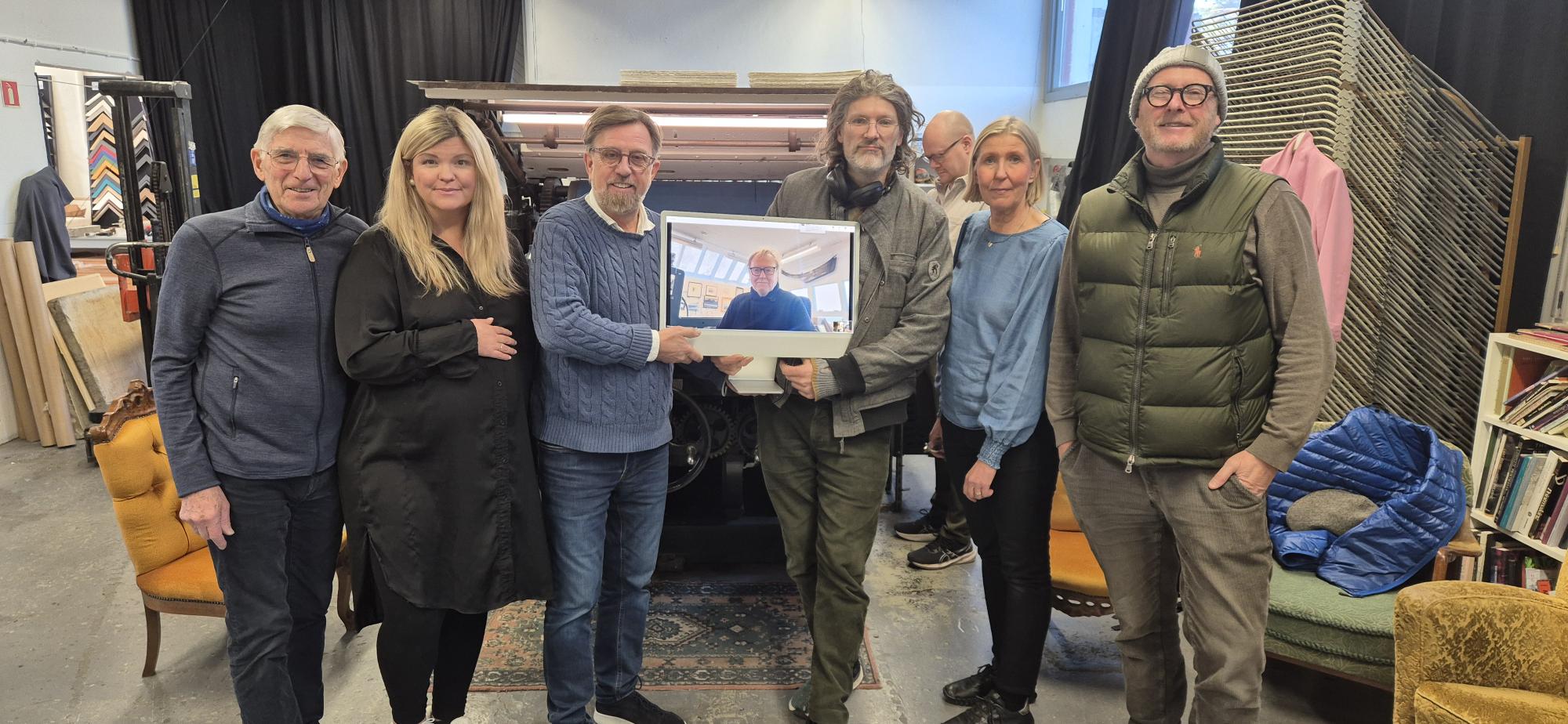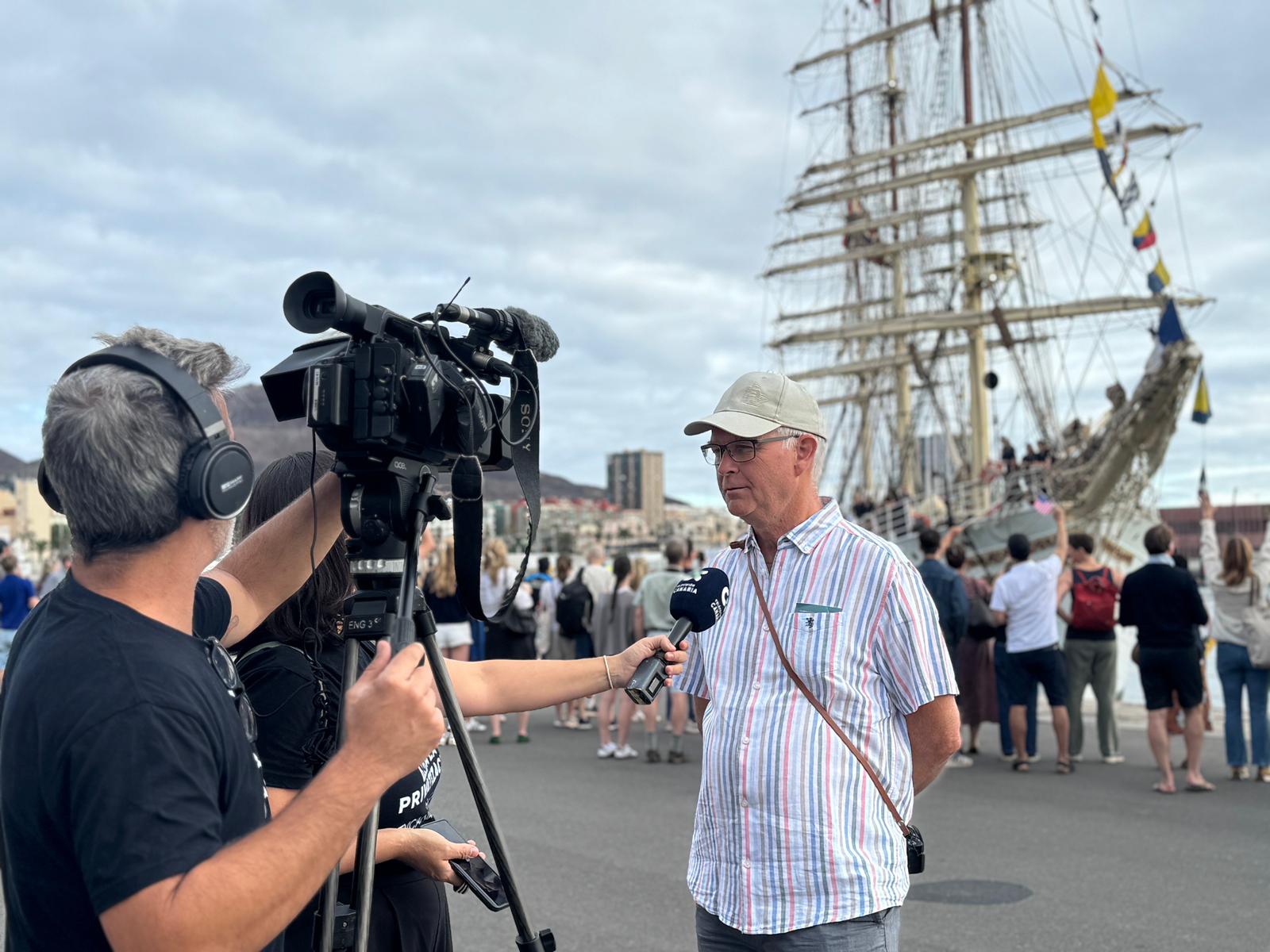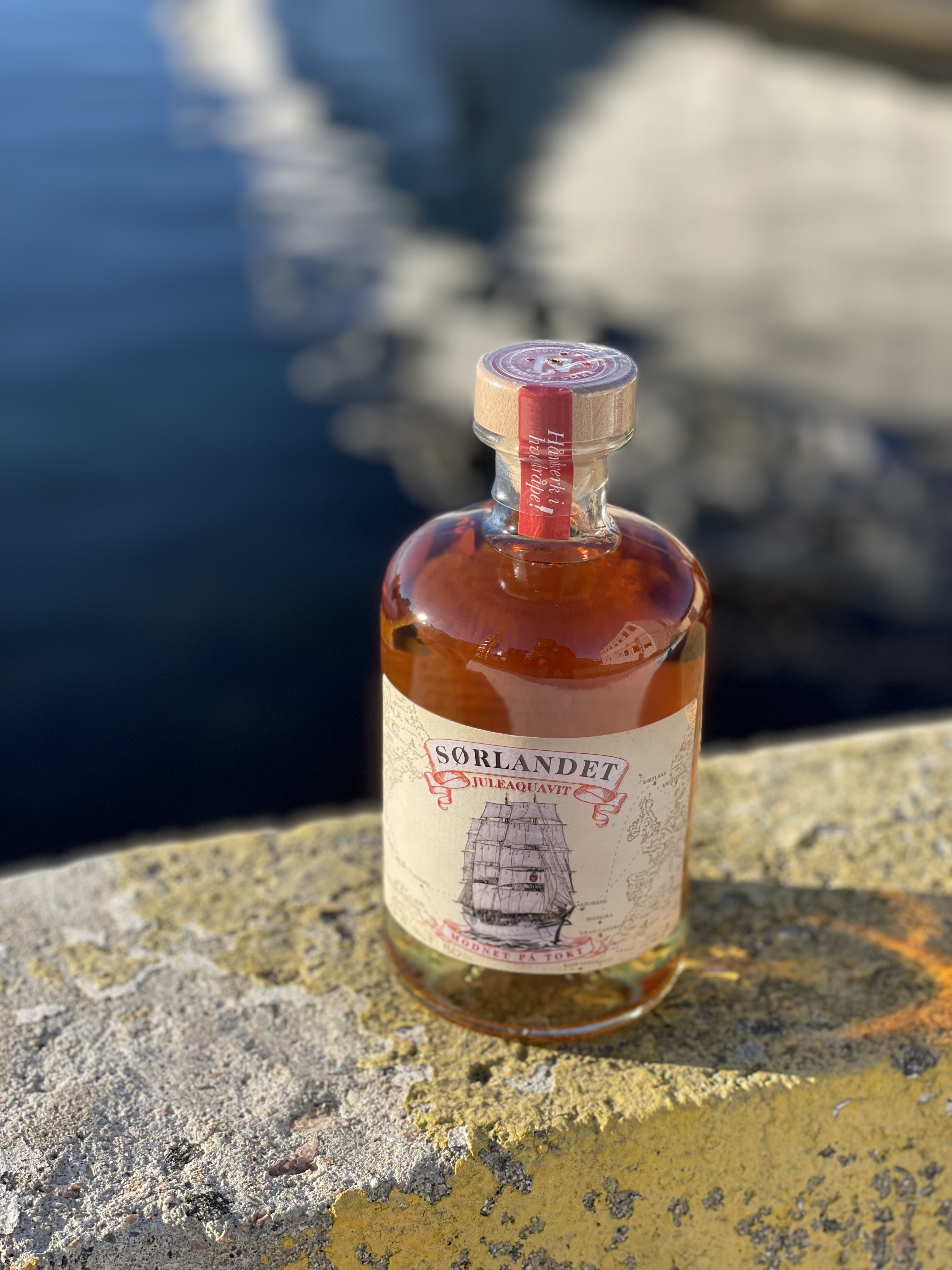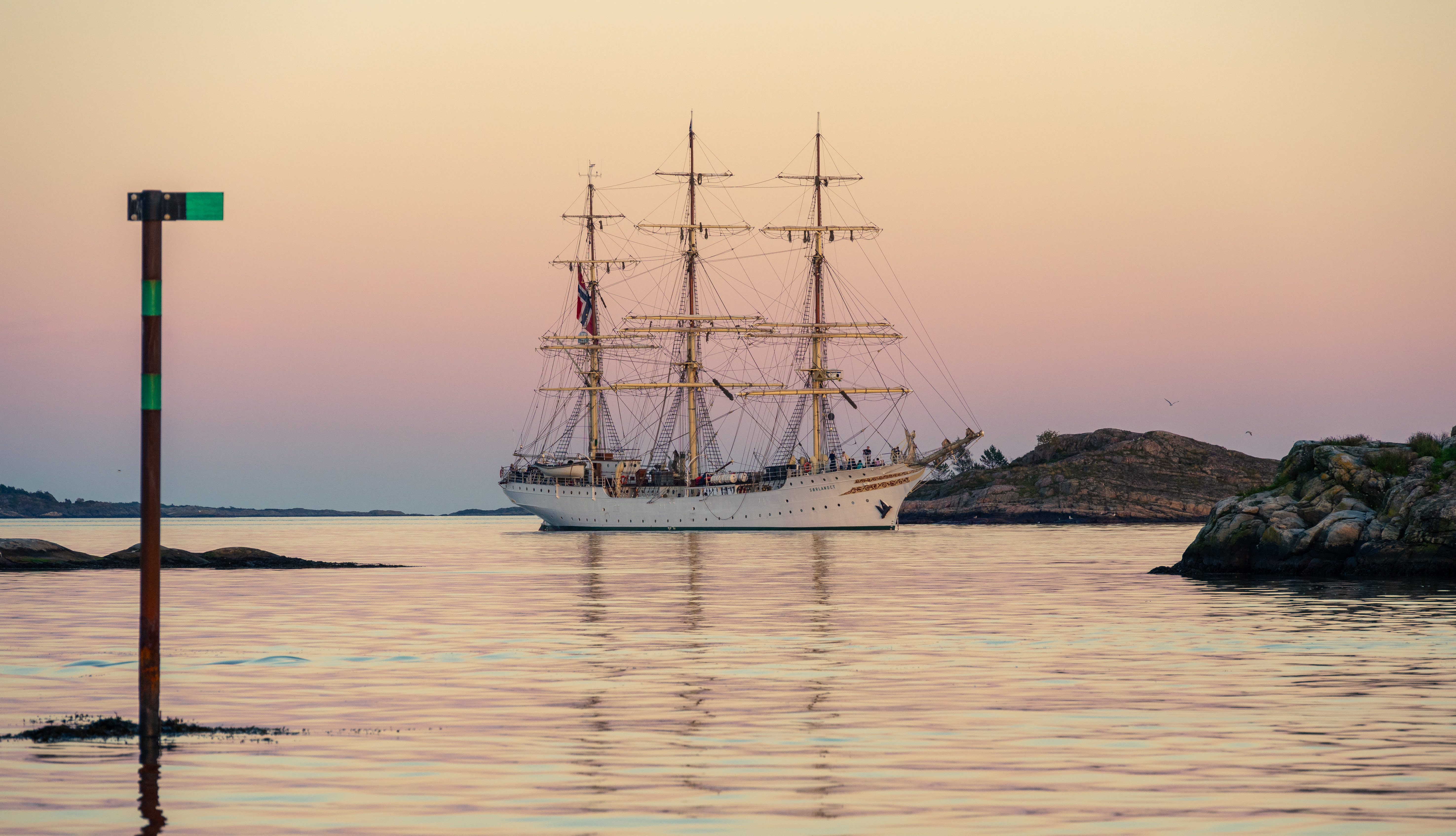Inspiration in art
Edvard Vigebo as a journalist and newspaper cartoonist? It was in this role that the famous artist first appeared in 1950. The young Vigebo was fascinated by the ship and life on board, he sailed with it and got to know the environment from the inside. In Fædrelandsvennen he wrote short epistles about his experience of the sailing community, illustrated with quick lines. We present here one of Vigebo's travel letters:

Do you know a boy who doesn't fancy sailing across the high seas to foreign lands, and the adventure of a lifetime?
For boys, the sea and the voyage are the epitome of the dream of growing up, of becoming a man - of realizing all their life-hungry instincts: The sea and travel are for the strong man and the boy wants to be strong. Strength is the victory of life - the sea and travel are life itself.
Now, not everyone gets to realize their boyhood dreams: active aboard a full rigger in sharp sailing.
Slack! Slack! Haul up the dinghy, haul in, make fast, haul out the port tack," shouts the third mate from the aft deck to the men on the mooring line. The sails are tied, the ship is made ready to sail. A very small, blue-clad boy, a fourteen-year-old, stands in the merset and roars the helmsman's words. It is like an echo. The dream lives on in the reality of the present. The school ship's boy is in the present STYRMANN. But it probably won't work. Every "man" in his place. "Out on the rough boy, grab hold - haul in!"
Seila bendes. Today is the thirteenth day from S/S "Sørlandet" mustered on, and 90 boys aged 14-18 years met here on board. It was an exciting day this first one. From all over the country they met here. They came from Lindesnes to Kirkenes. For many it was the first time they set foot on a ship's deck, and for some it was the first time they saw the sea. This was a great day! The day was, so to speak, a distinction between being a boy and being a man. Tomorrow, indeed today, they were given a responsibility - they would each take their place among all the others. Here on board, the foundations of their life's work were to be strengthened and built upon.

The muster is over. At the banjer , the guys were given their uniforms, which were also determined by their place among the galley, engine or deck boys - starboard and port watches. Getting to know each other was no problem. They became comrades. Happy voices in a myriad of dialects sounded across all decks and loudly before the first day was over. Yes, some were on the edge of their seats. The ship was to be inspected. The strangest of all the first day's experiences was probably when the bow signal went and almost 90 boys were to sleep their first night in a canvas berth at the banjer. The first guards took their turn.
The days go by. Shifts - free shifts, practical and theoretical lessons in rhythmic shifts. Twice a week there is shore leave. There has been 17 May and a lot of fun in that connection. Confirmation has also been for a couple of the pupils. The ship and the boys are now friends. On shore they are pure charmers. It is so strange with the uniform - even for 12-14 year old girls. - But whatever big and small things have happened - the really big day when the ship is at sea, and the sea and the ship become one, has not yet come.
We are sitting in the mess hall and I wonder how I will cope with the sea when the ship sets. "How is she in the sea?" I ask. "She's a good ship," I reply, "but she can heave, and you can feel your guts in your throat." Here last year, the steward tells me, in a storm we came out for, "ho" threw the butter pat stuck underneath - "That's right," says the carpenter. A good-natured and stout fellow. "I came in here and found the steward in the corner with the radio, and a model ship hanging there on the wall, above him, and all the things that had been on the table too. But I found out that I had nothing to do here, so I went back on deck." Yes, the guys are eager to get out, but when we have passed Øksø, some of them may want to go ashore again. But that's not so bad either - a couple of days in the sea and you get used to the sea, writes Edvard Vigebo.
Sørlandet has many times been a source of inspiration for some of art's most exclusive practitioners. Numerous paintings have seen the light of day, some good, some not so good. Model builders have had Sørlandet as a cherished object. Photographers in the media have been high and low on board. In his book about Else Marie Jakobsen, author Gunvald Opstad tells how the artist managed to turn The Ship into Norway's largest altarpiece. It began with a modest photograph in 1968. Else Marie Jakobsen took the photograph, added sails both inside and outside the rigging and made a family quilt for shipowner Yngvar Hansen Tangen in Kristiansand. She later made several versions of the ship, including one that Kristiasand gave to its English twin town Letchworth. Four years later, she put the ship up for sale and called the picture 'Growth' or 'The Lost Treasure'. The gap that then appeared in the rear sails gave her the idea for her Y-shaped carpets. Some of them came to be counted among her main works, Opstad writes. The Ship has, in other words, been of great importance for several of Else Marie Jakobsen's best products.
- Source: " The Ship Sørlandet - a school under sail",
published by the Foundation The Ship Sørlandet in April 1987.
Editor: Helge Svein Halvorsen
OTHER ARTICLES IN THIS SERIES:
- The gift letter that became a national cultural treasure
- A school of a lifetime
- Discipline - order - seamanship
- They came down from the rig and manned our fleet
- School under sail
- "We became men"
- Our youngest Vikings
- "Continuation School" for future sailors
- War, occupation, reconstruction
- Inspiration in art
- Over and out as a training ship
- In 1956, at the age of 14, he took part in the Tall Ships Races
- In triumph - and hurricane
- Famous names behind the ship


.jpg)




